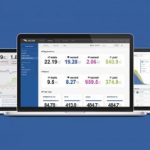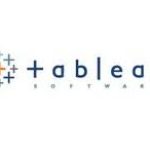How Do You Price Your Software?
 Over the years I have been involved in the challenging task of pricing software. There are always so many factors and situations that you need to accommodate. The risk is that your pricing becomes very complicated, becomes inappropriate under certain circumstances, and has unexpected impact on the (buying) behavior of you customers.
Over the years I have been involved in the challenging task of pricing software. There are always so many factors and situations that you need to accommodate. The risk is that your pricing becomes very complicated, becomes inappropriate under certain circumstances, and has unexpected impact on the (buying) behavior of you customers.
While doing research for a client project. I stumbled over this little book by Neil Davidson: “Don’t Just Roll The Dice”
I can recommend the book to anyone involved in the metaphysical science of pricing software products and solutions. The book is well written, short, and covers most software based business models, from simple apps to enterprise solutions.
The objective of pricing is to maximize the gross margin (which in the software industry is very close to, but not identical to the revenue) over the lifetime of the product.
With software you can design all types of product variations with corresponding price schemes, and many software companies do just that. The book provides some sound guidelines for keeping pricing simple while optimizing your gross margin potential.
Pricing Enterprise Software (low volume – high price)
When pricing feature rich B2B software (such as ERP systems) you face several challenges such as:
- Understanding the benefits/value your software provides the various customer segments
- Understanding the total cost of ownership for your product
- Understanding the competitive alternatives available to the customers
- Understanding your competitive position from a product as well as from a company perspective (are you the challenger, the market leader or something in between?)
- Assessing the cost of shifting to your solution
- Defining the pricing variables (features, transactions, users (named or concurrent), performance, etc.)
- Optimizing the revenue potential for various market segments (the software may have different value in different segments)
- Securing smooth migrations paths from the smallest customers with basic functionality to the largest enterprises with full functionality
- Defining and pricing the maintenance subscription
Simplicity is not the objective in pricing enterprise software.
The projects will always include much more than just the software. Often the software will not be the biggest part of the project. The price of the software itself is typically NOT the most important decision making criteria for the customer.
The projects are always different and you often have to negotiate each project individually. If you have a situation where the software is 25% of the project and the service portion is 75%, then you will prefer discounting the software. Why? Because you have very little CoGS (Cost of Goods Sold) on the software. Delivering services has a very high CoGS rate (60% or so), thus discounting services is very painful.
Selling your software through a channel of partners makes the situation even more challenging. The resellers must understand the pricing principles and the prices must remain transparent. Selling through resellers gives you much less freedom in individual project related price setting.
Simple Pricing (high volume – low price)
 In the high volume markets simplicity reigns. The king of simplicity is Basecamp from 37Signals (a service we use at TBK Consult), which is also mentioned in the book by Neil Davidson.
In the high volume markets simplicity reigns. The king of simplicity is Basecamp from 37Signals (a service we use at TBK Consult), which is also mentioned in the book by Neil Davidson.
Just recently we worked on a pricing project for a client with a Cloud-based delivery format. For simplicity’s sake, the client wanted to go with a $1/month/user price format. That is certainly simple, but as the product is applicable in all types of organizations this price will not work for customers with large number of users. Should we ignore these customers or somehow indicate a volume discount? Should we introduce a staircase pricing scheme instead? How do we manage customers with growth in number of users? How do we enable the customer to figure out the price in the various pricing scenarios?
Creating a simple pricing scheme is not simple!








